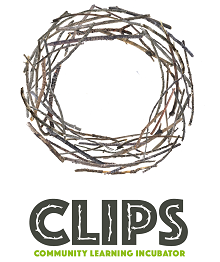Consciously shared intention (where the group wants to go) is one of basic pillars in the majority of group projects. Setting, developing and maintaining such intention requires both initial effort and continuous attention later on. This ensures good “journey” and serves as a measure of goals being reached. Intentions in group projects can be subtle (spiritual) or practical (material).
Intentions define which people will be included and which excluded, based on their personal motivations. This is natural, since each project embodies certain core characteristics (for example how close the community is, whether animals are allowed, what is the policy on meat-eating etc.), that is the filter determining what kind of people the project attracts and how much they identify with the project.
When talking about various aspects and processes that have to do with intention the first layer is personal intention to join (or start) a project. Personal intention influences individual contributions to the group. It is usually about meeting personal needs and desires, per example for friendship, meaningful work, a change of living conditions, healing wounds from past relationships etc. Personal intentions actually open up opportunities for community-building, which is often insufficiently acknowledged.
The second layer has to do with shared, community-oriented intentions.
This layer is often expressed as vision, mission and goals. Besides these three concepts many others are used by various groups such as: aims, values, objectives. Clear intentions bring a clear message to potential allies, members, partners, donors etc., and are helping to understand what the project is actually about.
The intention further defines the positioning of the project in the society. How is the project seen in relation to the surrounding society? Successful projects are generally built through alliances with various stakeholders, both with like-minded projects and with diverse individuals, groups and institutions.
Referring to a group resembling a microcosm of a living cell, that needs a membrane to hold together all its elements and allow it to preserve it as a unique entity. The membrane gives each cell its identity by separating it from the environment and allowing it exchange by letting information, nutrients and excreta move in and out, thanks to its osmotic structure. Similarly, a group project needs a membrane to hold it together in different phases of its existence, particularly in times of difficulty and conflict. In our experience one of the most useful steps that a group can take to make sure that the light would shine even in dark times is to create a set of documents describing and confirming the transpersonal identity of the group, binding people over and beyond personality.
This set should include documents with different levels of abstraction and time frame, ranging from the most abstract, general and long term (vision), to more concrete, defined and local (mission), to even more detailed, practical and time-defined (goals), and finally right down to the meeting minutes describing how each single action will be implemented (action plan: what, who, when and where). Legal statutes also belong to the set of documents and should be aligned with other main documents as much as possible.
All these documents are interconnected like steps on a ladder or genes in DNA chain.
They are reflected in structures and practices and lead back to the founding intention.
To make sure that these elementary parts of group membrane are really shared and perceived as common it is important to create them in a participatory process, to discuss and revise them and give people space to include their individual perspectives, personal intentions and commitments.
Finally we need to acknowledge that a group project is like a living organism with its own internal metabolism and life cycle. It goes through phases of birth, childhood, teens, maturity, old age and, yes, death too.

